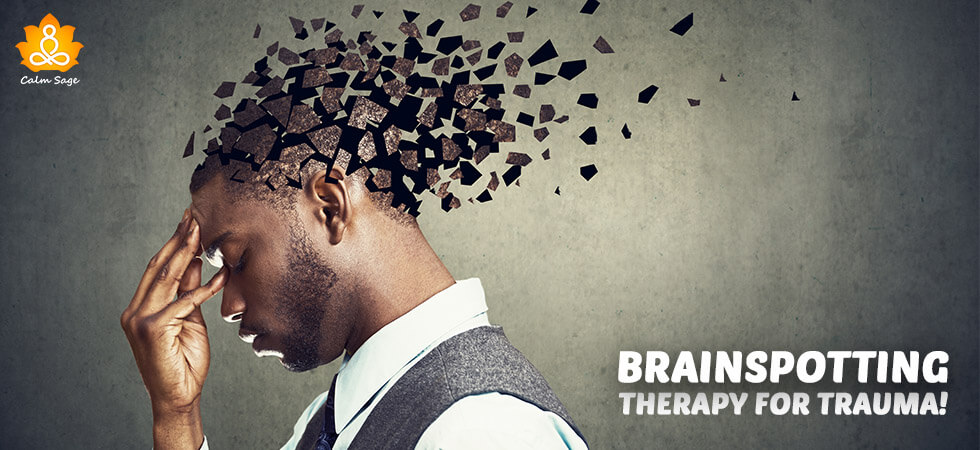What’s Brainspotting Therapy? Does It Help With Trauma?

Brainspotting therapy is a fairly new type of therapy. It is being used for people who suffer from post-traumatic stress disorder, trauma, and negative thoughts. Brainspotting has been designed to help people access, process, and relieve themselves from trauma, physical pain, and even psychologically induced pain.
Let’s understand brainspotting therapy in detail…
What Is Brainspotting Therapy?
Brainspotting Therapy is a new mental health interventional therapeutic approach developed by David Grand. He came about this kind of therapy while he was working with survivors of trauma and some mental health professionals.
Brainspotting Therapy uses a person’s visual field to process trauma. Its main aim is to assess trauma stored in the subcortical brain. Grand believed that the direction in which people look can directly influence their feelings. So, he used this piece of information to formulate Brainspotting Therapy.
Brainspotting therapy works on neurobiological attunement. By neurobiological attunement, I mean the mind and body connection. There have been various studies that state that the brain and the body’s reactions are connected.
Our body stores the trauma in various parts and that’s why we can feel the pain. Let me explain it to you with an example:
Lisa, a trauma survivor, feared public speaking because of a traumatic personal experience. When did a brainspotting therapist ask her where she felt a sensation in her body upon talking in public?
Lisa replied, “I have a strangely heavy feeling around my chest and my stomach starts to feel funny.”
Now, you see, Lisa’s trauma was stored in her chest and stomach.
Let’s do an exercise, think about a traumatic experience, and observe how your body feels. Wherever you feel tension, that’s where your body has stored the distress.
Okay now, coming back to the topic, brainspotting begins with identifying the stored trauma and then finding the eye positioning where you feel its maximum and minimum impact.
Shall we discuss the process of brainspotting?
This will help you understand how the entire therapy works…
How Does Brainspotting Therapy Work?
Brainspotting Therapy functions on the belief that trauma and negative feelings can be stored in the body which can cause you to develop various emotional and physical illnesses. What brainspotting does is, it resets the memories that your body has stored for a particular incident or a traumatic experience.
Being stuck with memories of a traumatic event has been termed as ‘frozen maladaptive homeostasis’ by Grand. The state of homeostasis is beneficial for us but this particular ‘stuckness’ is not good for us.
Through brainspotting, you can access this particular state of homeostasis and you can integrate this maladaptive processing of traumatic memories.
The functioning of Brainspotting Therapy is similar to that of somatic experiencing therapy and EMDR Therapy. Brainspotting Therapy can be seen as a combination of both semantic experience and EMDR therapy because it uses bodily sensation as well as eye movement desensitization.
How Does A Brainspotting Therapy Session Look Like?
Brainspotting Therapy is a type of body-brain therapy that falls in the category of “bottom-up” therapies. These therapies aim at releasing the physical stress stored in the body which will eventually help in releasing the emotional stress as well.
Here’s how a Brainspotting Therapy session takes place….
- You will first be made to enter a relaxed state of mind. Your therapist can use music, imagery, breathing exercises, or anything for that matter to make you comfortable and at peace.
- Once that is achieved you will be asked to locate where in your body you feel the most distressed and also rank the pain on a scale of 0-10.
- Then with the help of a pointer your therapist will guide your eye movement and identify your brain spot (a point in the brain that controls your trauma). You will have to rate each place, where you are looking, on a scale of 0-10. Whichever brainspot scores the highest is the one with the most distress.
- Now you can choose either the ‘outside window’ approach (therapist recommends a brainspot to begin working with) or the ‘inside window’ approach (you choose your spot)
- Now you begin talking about your feelings and emotions and only stick to that one area in your body for now.
- Now gather all the information you found out and try to find out the meaning behind all your thoughts and feelings with the help of your therapist.
Once the session is over, you will again rate your level of distress and hopefully, it will decrease.
What Can Brainspotting Therapy Help With?
Brainspotting Therapy was ideally developed to heal people suffering from trauma but it can help heal people with some other mental health conditions as well. Here’s a list of who all can benefit from Brainspotting Therapy…
- Anxiety
- Attachment style-related issues
- Substance abuse
- Chronic pain
- Depression
- Post-traumatic stress disorder.
Benefits Of Brainspotting Therapy
There are quite a few benefits of Brainspotting Therapy, here’s a list of that too…
- Helps in relieving pain
- Traumatic memories become less painful
- Your negative thought process is altered
- There is a hike in your energy
- Your sleep is not disturbed because flashbacks are reduced
Things To Keep In Mind!
- Brainspotting Therapy is a relatively new technique
- We do not know about its long-term effects
- It is still being considered as an alternate treatment plan
- Be prepared to discuss your trauma and painful memories
- Indulge in self-care practices after each session
Online-Therapy
Best at providing Cognitive-behavioral therapy

- Excellent qualified, certified, and trained therapists
- Unlimited communication with the therapist via video, audio, and chat
- Offers a therapy toolbox with access to worksheets, journals, and more
- Affordable weekly subscription plans to pick from
That’s all for Brainspotting Therapy!
I hope you found this blog interesting and informative. Do let me know if you have any questions about Brainspotting Therapy and its techniques in the comment section.
Thanks for reading.
Take care and stay safe.




















